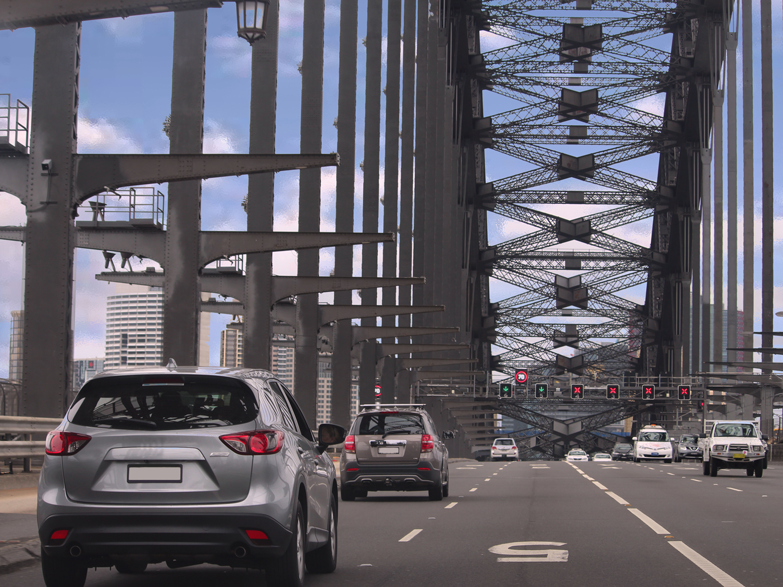Co-authored by Ken Calderwood, Law Clerk
Originally published in the Law Institute Journal - July 2016
Snapshot
- The LIV, TAC and ALA have developed a revised set of protocols for practitioners representing transport accident victims.
- The revised protocols will further streamline alternative dispute resolution under the Transport Accident Scheme.
- The new protocols are effective 1 July 2016 and will be monitored until 2020.
The 2016 TAC protocols, effective 1 July 2016, will provide an alternative resolution mechanism at every juncture before formal litigation, with additional simplified processes.
Background
Although the Transport Accident Act 1986 (TAA) Scheme commenced on 1 January 1987, it took time before the new regime came into operation. When it did, however, it became apparent that there were areas where disputes between the Transport Accident Commission (TAC) and the injured claimant, through their lawyer, were common.
The new scheme introduced criteria that needed to be fulfilled before benefits or assistance flowed. Hospital, medical and associated treatment were mostly delivered without delay, but entitlements to no fault benefits, such as loss of income and a payment based upon a level of impairment led to disputation. The common law right to sue for compensation was also fettered by the requirement to have a recognised serious injury under the scheme. The definition of serious injury could be achieved by a 30 per cent level of impairment or by reaching a narrative definition. This requirement also caused congestion in the process of compensation being delivered to road accident victims.
In 2004, a forward thinking initiative resulted in the TAC, the Australian Lawyers Alliance (ALA) and the LIV coming together to develop processes to reduce some of the delays and blockages to early delivery of assistance to the injured. This consultation resulted in a Set of Protocols (the protocols) which came into operation in April 2005.
Not binding
The protocols were signed off by the government minister and the presidents of the LIV and ALA, and were to apply to all members of the groups. Although the LIV and ALA could not force members to comply with the protocols, only a few firms chose not to.
The reasons for such a high level of compliance included the possibility of resolution without litigation and the recognition of the role played by solicitors by payment of agreed amounts of legal costs, without a court or tribunal order.
The high level of compliance resulted in approximately 90 per cent of common law matters resolving within 12 months of a serious injury certificate being granted and 80 per cent of no fault disputes resolving through the protocol process.
This has meant that only the truly contentious matters reach the courts. The determinations made by the County Court in serious injury applications would also seem to reflect this:
- serious injury applications granted by court - 52 per cent
- serious injury applications refused by court - 48 per cent.1
Review request
The protocols continued to operate over the decade with slight adjustments from time to time. A surprise legislative change in 2013,2 restricting the payment by the TAC for medico-legal reports and a request from the chairman of the TAC that there be a review, resulted in a further consultation process. The review proved to be an onerous task which took more than two years to complete.
The revised set of protocols, now available on the TAC website, take effect from 1 July 2016.3
Joint medical examination
The revised protocols have included and formalised the processes for medico-legal examinations which have been occurring since the amendments to the TAA in 2013.
Sections 60(2F) and (2G) provide that the TAC pay for treating practitioner medical reports and medico-legal reports which are jointly requested by the claimant's lawyer and the TAC.
Medico-legal examination appointments are usually made by the lawyer and a joint medical examination (JME) request form is completed and provided to the TAC at least 28 days before the appointment. The TAC is required to respond within 21 days but if no response is received, the examination is deemed approved.
Each side can then provide information and questions to the examining health professional, with copies provided to the opposing party. The report is provided to each party with the account being directed to and paid by the TAC.
There is provision for rescheduling of examinations if the claimant fails to attend, and the TAC will pay the reasonable cost of non-attendance fees where notice is provided less than three working days prior to the examination.
Joint medico-legal examinations are anticipated to be agreed in the impairment process and as part of the dispute resolution process. The protocols stipulate circumstances where the TAC will not agree to a JME and situations where it may not authorise them.
Serious injury application
A major reform to the serious injury process involves the completion of a form that details all relevant information which, together with an affidavit, all relevant documents and medical reports, is provided to the TAC in one package.
The form allows the plaintiff to indicate if the eventual action for common law damages would only claim pain and suffering.
The documents to accompany the application include liability documents, which is puzzling as the application at that time just concerns injury.
Within 28 days of the receipt of the serious injury application, the TAC is required to notify the claimant's lawyer as to whether the TAC indemnifies the proposed defendant. Whether negligence is admitted or contributory negligence alleged is also required to be advised. This view, however, is only on a without prejudice basis so may subsequently be of little value.
The protocols impose a prohibition upon either party relying on further documents at a later date, if they were not previously exchanged, except by consent or leave of the court.
Serious injury conference pilot
In a new initiative, the protocols have included a serious injury conference process to be piloted for two years. Where the TAC believes it would be of use to have a meeting with the claimant and their lawyers, it can request a meeting prior to making a decision.
Where the TAC intends to deny a serious injury certificate, it is required to notify the claimant's lawyers who can also request a meeting. The TAC is required to send out any information it will rely on and the reasons for intending to deny the application. The claimant's lawyer can provide further information as well as request a conference.
In the event of a resolution at a conference, the TAC will pay $5500 solicitor's preparation fee and counsel's appearance fee of $3300. It is extremely disappointing that where a solicitor appears at the conference instead of a barrister and performs the same function, the TAC is not prepared to make any payment for the attendance by the solicitor.
Common law conferences
The revised protocols include a requirement that a meeting takes place between the parties before common law proceedings are issued. It is expected that the meeting would take place within 60 days of the grant. Any admission of liability by the TAC at this conference is again without prejudice and can't be relied upon in the future conduct of the proceeding.
If a resolution is not achieved, a certification letter is issued by the TAC and the case proceeds to court.
After this time, the obligation to exchange further material, other than pursuant to the court orders, ceases.
Impairment assessment protocols
The determination of a person's level of permanent impairment pursuant to the American Medical Association Guides can now be commenced by lodging an impairment application, notifying the TAC on a JME request form or a written letter indicating the claimant intends to request an impairment assessment.
A completed impairment application form is lodged when the required information is available. All relevant medical reports are required to accompany the form as well as the suggested whole person impairment.
If a form is not sent to the TAC after a JME, the TAC may send a reminder letter requesting an application form. If none is received within 35 days, the TAC can make their own determination. In that event, there are no costs payable to the lawyer representing the claimant.
Where a completed application form has been lodged, the TAC will provide an impairment proposal to the claimant's lawyer within 28 days. This can be accepted or an alternative assessment suggested.
Bypass impairment
Section 93 of the TAA provides that a claimant is entitled to sue if the TAC determines that the person has an impairment of 30 per cent or more or meets the narrative threshold of a serious injury. A new option contained in the revised protocols allows a claimant to bypass the impairment process and have the TAC determine the right to sue under the narrative criteria.
An example of where this process would be most useful is where a person has suffered severe scaring or disfigurement. They may not rate highly on impairment but clearly have a serious injury on the narrative definition of disfigurement.4
The bypass provision also allows for an extra payment of $3300 for costs where common law action has resolved and the claimant has not commenced an impairment application.
Statutory benefit disputes
The TAA provides hospital, medical and rehabilitation assistance, together with some income replacement regardless of how the transport accident occurred.5 Where the injured person is aggrieved by a decision in this area, the TAA provides the right to appeal to VCAT within 12 months. This has caused difficulties for the injured in the past as the process could be expensive and slow.
The protocols introduced in 2005 made significant changes which provided a cost and time effective process for resolution of these disputes.
The TAC now appoints review officers who come to the dispute with a fresh mind and have complete power to overturn the decision or enter into a compromised agreement. The number of applications lodged at VCAT has dramatically dropped as a result of this initiative.
Through legislation passed in 2014, the TAA was amended to stop time running where a protocol dispute was being considered. The claimant now has three months after the review has been completed or 12 months after the decision, whichever is the later.6
The revised protocols give further regulation to the process. The guiding principle is that both the lawyer and the TAC aim to resolve the dispute within 120 days.
After exchange of specific information, depending on the issue, the claimant's lawyer is now to provide three proposed dates when the claimant will be able to participate in a telephone conference. A barrister can be engaged with prior approval of the TAC.
Within 14 days of the dispute resolution conference, the TAC must either affirm or revoke the decision or confirm the terms of an agreed compromise by letter.
If the decision is affirmed, the letter must include a note that the claimant has three months from the date of the letter or 12 months from the date of the original decision, whichever is the later, to lodge an application at VCAT.
Legal costs
Where a disputed area or process is resolved in a claimant's favour, the protocols provide for a payment towards legal costs. These amounts have been revised and increased in accordance with the court scales and costs of litigation.
The new protocols also provide for the TAC to pay interpreter's fees, the cost of records and reports, and counsel's fees where approval is granted, regardless of outcome. The TAC will also pay for the cost of a mediator where a mediator is engaged.
Although the revised protocols are effective from 1 July 2016, applications that were initiated from 29 February 2016 will be paid at the newer price points upon resolution.
Expansion to non-serious injury
Two entitlements under the TAA Scheme that did not involve serious injury have now been included in the revised protocols.
Arising out of the use claims and Part III of the Wrongs Act 1958 (Vic) actions can be issued in court without restriction.7
For arising out of the use claims, the protocols provide for a letter, addressed to the TAC, to contain details of the proposed defendants, the vehicles involved and the injuries suffered. A summary of the circumstances and allegations of negligence is also required.
The TAC is then to indicate within 28 days whether it indemnifies the proposed defendant and admits that the injuries arose out of the use of the vehicle. Further medical and pecuniary loss information is exchanged and a common law conference arranged within a further 60 days.
A similar schedule occurs for Part III of the Wrongs Act claims, however, there may need to be further information and consideration of the circumstances as dependent benefits may be payable under ss57 and 58 of the TAA.
The future
In nearly every aspect, the revised protocols are a step forward for alternative dispute resolution in Victoria. The advancement has also extended into the evaluation of the changes made. Representatives of the LIV, ALA and TAC will meet quarterly to monitor progress with a schedule of outcomes and timelines included in the document. One example is the reduction in time from serious injury applications to final litigated decision from 23.7 months to 18 months by 2017-2018. If this and other aims can be achieved, it will be a shining example of alternative dispute resolution without litigation.
1. Figures provided by O'Neill J at County Court of Victoria Common Law Practice Note Seminar on 25 February 2016. 2. Transport Accident Act No. 71/2013, s60(2I). 3. www.tac.vic.gov.au/clients/forms-and-brochures. 4. Note 2 above, s9317(b). 5. Note 2 above, s60. 6. Note 2 above, s77(1A). 7. Note 2 above, s94.


